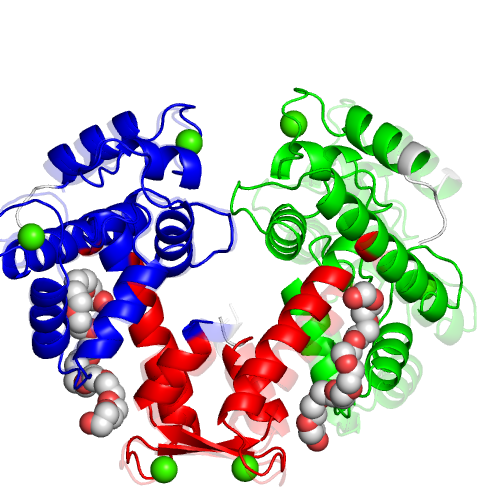CD.29 |
PROGRAMMED CELL DEATH PROTEIN 6 |
|
|
|
Ligand |
PDB*1 |
Full name |
12P,2PE,6xCA |
DODECAETHYLENE GLYCOL,NONAETHYLENE GLYCOL,6x(CALCIUM ION) |
|
*1 Ligand name designated by the PDB identifiers. |
Segments |
Component No. |
Fixed*1 |
Moving*1 |
Motion type |
Ligand binding |
Coupled motion type |
1 |
D1(188A-189A,25B-90B,92B-152B) |
D2(91A-92A,152A-187A,91B-91B,153B-188B) |
Domain |
Coupled |
Opening |
|
*1 The location of the fixed and moving segments indicated by the residue number assigned in the ligand-bound form. The background color of characters indicates the corresponding segment in the structure. The colored segments not described in the Table are: 1) a part of component in which the motion is small (< 1.0 A), or, 2) a part of a protomer of homodimers, for which a corresponding part of the other protomer is shown in the Table. |
Displacement and disorder |
Component No. |
RMSD*1 |
Displacement*2 |
Disorder-order transition*3 |
Disorder residue*4 |
Helix-Coil*5 |
1 |
1.5 |
|
*1 The root-mean-square displacement of a component of motion calculated for the domain motions. |
Linear response |
Component No. |
Correlation coefficient*1 |
1 |
0.27 |
|
*1 The correlation coefficient between the displacement vector predicted by the linear response theory and the one observed in the crystal structures. |

